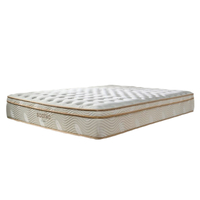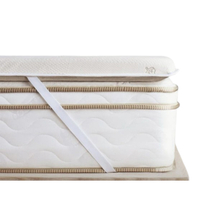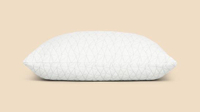5 reasons your back pain is worse in the morning — and what you can do to help
Could your mattress be to blame for your early morning back pain?
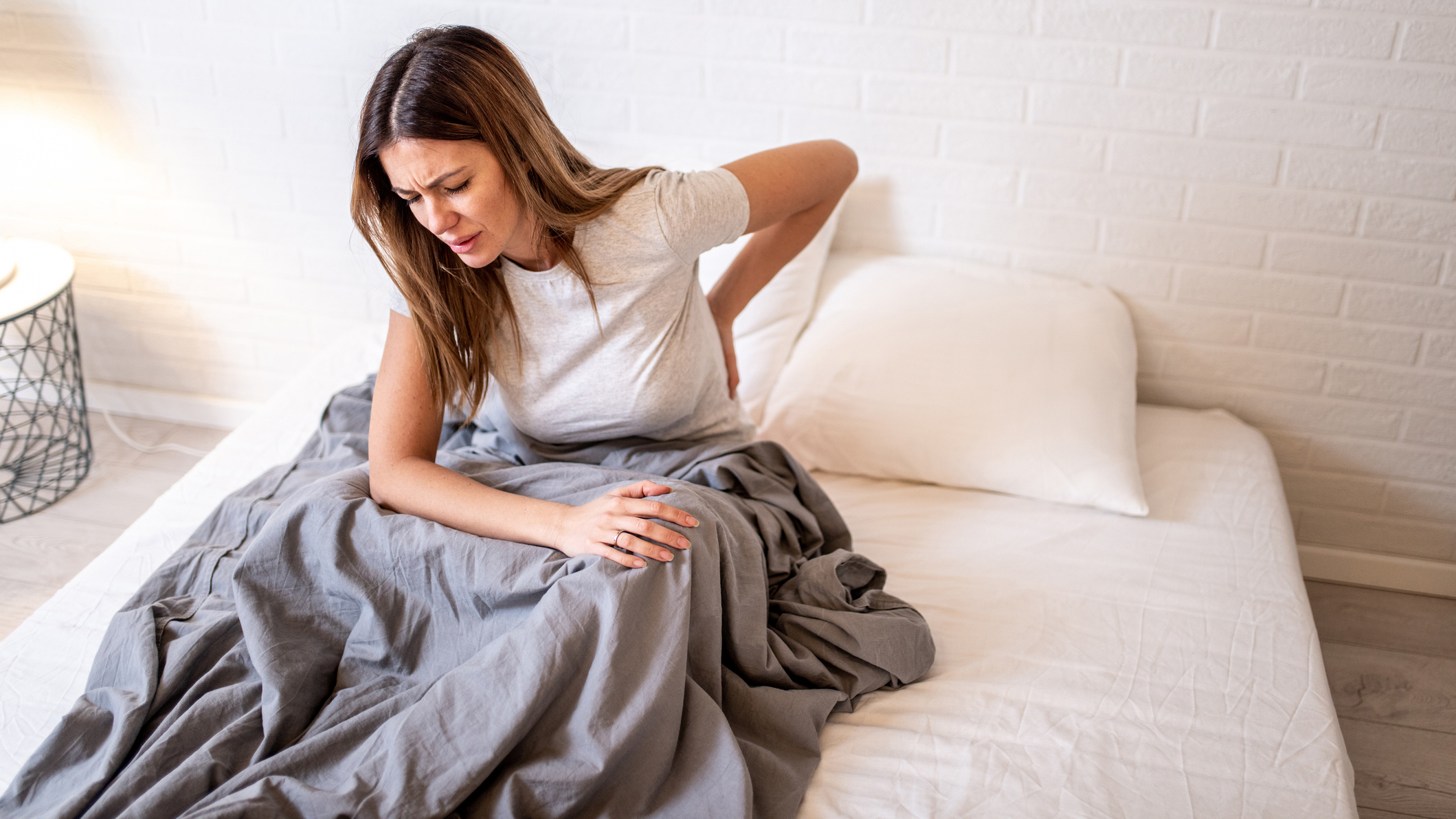
Waking up in the morning with mild back pain after lying in one position for hours isn’t unusual. But if you’re experiencing more severe pain in the morning, something else may be to blame — including your mattress and pillow setup.
It’s easy to end up with a mattress (or pillow) that isn’t quite right if you don’t know what you’re looking for. And, even the best mattress chosen for your specific sleep needs won’t last forever, and an old mattress can cause problems for your back too (more on that below).
Here, we’ll run you through the main reasons why your back pain may be worse in the morning and give you suggestions for how to fix it. If you are looking to buy one of the best mattresses for back pain, the upcoming Presidents’ Day mattress sales are an excellent time to buy, with some early deals already live.
5 reasons your back pain is worse in the morning
There are a number of different reasons why your back pain might be worse in the morning. Here, we take a look at some of the main offenders.
1. Your mattress doesn't support your sleep position
It's widely accepted knowledge that best medium-firm mattresses are the right choice for those with back pain, but that’s not always the case. In fact, it’s your sleeping style and body weight that should dictate your choice of firmness.
This is important because mattress that isn’t supportive of your sleeping position and body shape will not promote healthy spinal alignment. And, maintaining a neutral spinal alignment and avoiding the build-up of stress on pressure points is key to avoiding back pain.
In general, lighter weight and side sleepers need a plusher mattress to ease tension on pressure points, while heavier bodies and stomach sleepers need a firmer mattress to stop their hips from sinking in too far.
Back sleepers need decent lumbar support, but also some cushioning around their pressure points, too. Choosing the right mattress for your sleeping style can make a huge difference to your pain levels.
2. Muscle stiffness from lack of movement
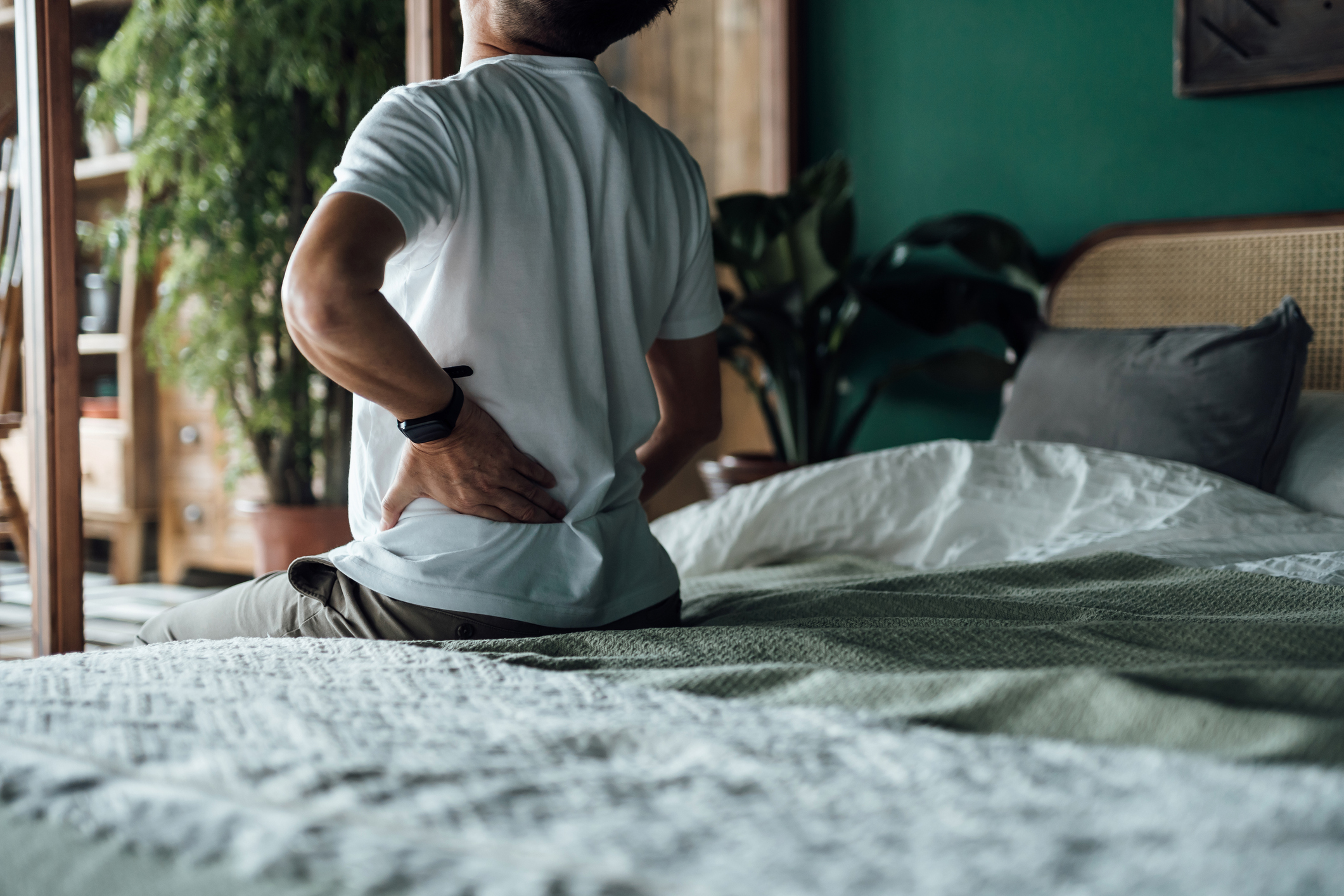
There's no denying that we have become a more sedentary society in recent times, with many of us spending long periods sitting at a desk during the day, and often slumping on a sofa in the evening, too.
Add lying in bed all night asleep to this, and it’s not surprising that muscle stiffness can become an issue. When we’re inactive for long periods of time, our muscles start to tighten up and become stiff. This, of course, can lead to aches and can also exacerbate or even cause back pain.
The wrong mattress can also contribute to muscle stiffness. If our beds aren't suited to our sleeping style, there's a strong chance we'll end up spending the night in an uncomfortable position where the spine isn't properly aligned, making it all the more likely we'll wake up stiff and achy.
So, as well as sleeping on the right mattress, it's key that we move about during the day, whether that's taking a short walk on a lunch break, stretching at the desk, or even scheduling in a session at the gym.
3. Your pillow is the wrong loft
Pillows are often an afterthought, but sleeping on the wrong type can be one of the major causes of back pain in the morning. Even if you have one of the best pillows of the year, a loft that is incompatible to your sleeping style means your neck and spine can become misaligned, which can lead to aches and pains.
Knowing how to choose the right pillow for your sleeping style will make a huge difference. Depending on how you sleep, you’ll need a different amount of loft in your pillow.
Side sleepers need a higher loft to ensure the side of their head doesn’t dip towards the mattress and cause misalignment, while back and stomach sleepers need a lower loft to avoid the neck stretching out of alignment with the spine . Combination sleepers should look for a mid-loft or adjustable fill pillow, as their pillow needs flexibility to adjust to changing sleep positions.
4. Your mattress has lost its support
Even the best luxury mattresses won't last forever. If you always wake up in pain on your mattress at home, and sleep better anywhere else, there’s a high chance that your existing mattress just isn’t up to the job anymore. This is because mattresses lose their support over time as foams and coils become weaker.
The comfort layers designed to ease pressure and springs that should evenly support your weight are no longer doing their job effectively. Unsurprisingly, this can lead to stress on pressure points and your spine becoming misaligned, which, in turn, may mean unpleasant back pain.
If your mattress is over 10 years old, lumpy of sagging or has springs poking out, these are all strong signs that it's time to invest in a new mattress.
5. You have an underlying back or joint condition
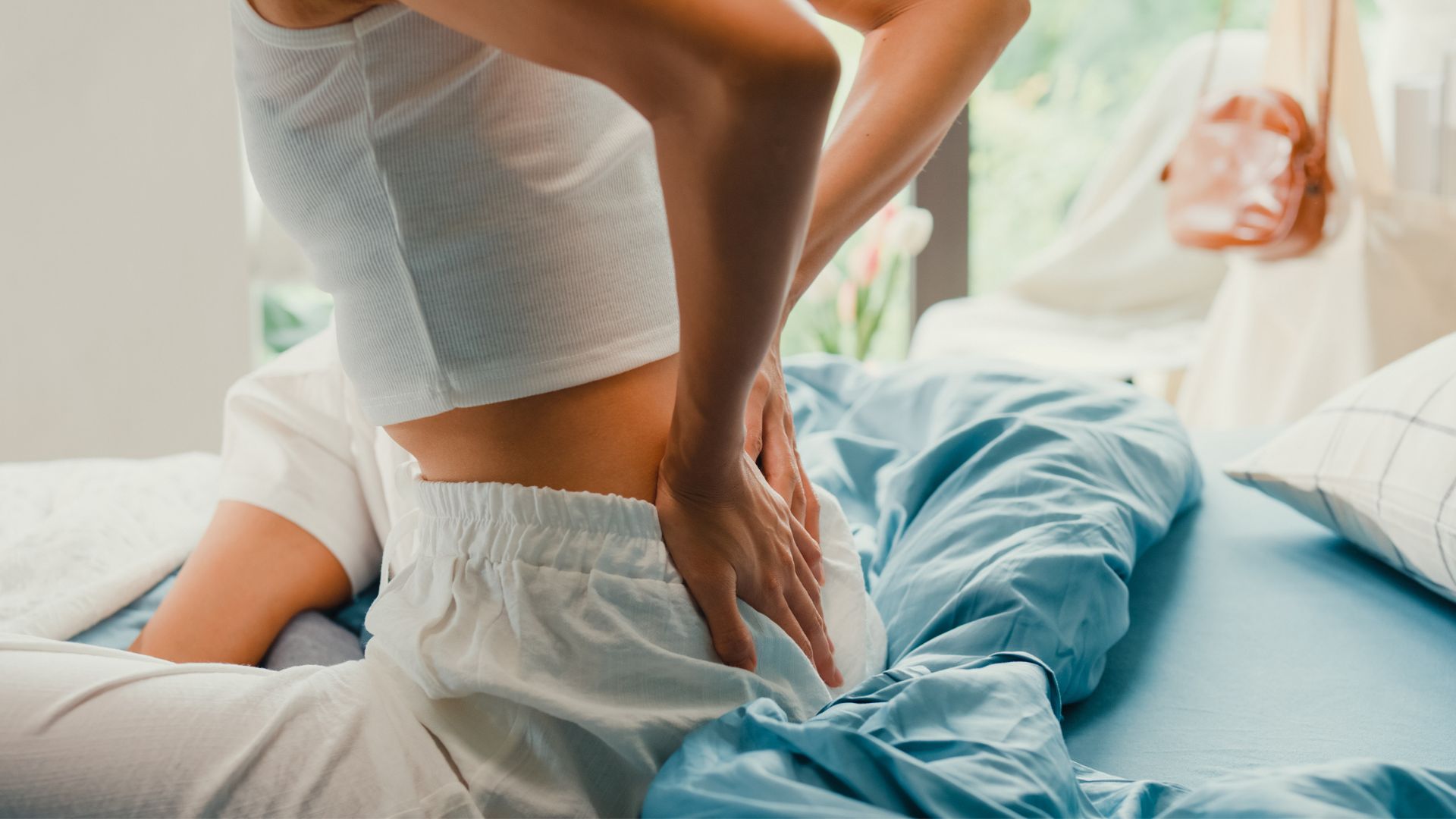
If you’ve ruled out other possible causes, your back pain could be down to an underlying back, joint or health condition.
And, as we age, these conditions can become more prevalent – for example, over 90% of adults over 60 show some evidence of degenerated spinal discs, according to Columbia University Irving Medical Center.
However, there's a whole host of conditions that can cause back pain in the morning, including sciatica, scoliosis, arthritis, endometriosis, osteoporosis and fibromyalgia. Of course, these conditions are going to come with other symptoms (including aches), and you may not just experience back pain in the morning. But if you can’t find any other explanation for your pain, it’s important to talk to your doctor.
How to reduce back pain while you sleep
Now you know what might be causing your back pain, you’ll want to take action to fix it. Here’s where to start.
Invest in a new mattress
If your mattress is not providing the right support or you’re sleeping on the wrong firmness for your sleeping style, the upcoming Presidents’ Day sales are a perfect opportunity to pick up a new bed. Most experts recommend a medium-firm bed for those with back pain, but the exact mattress you pick should be dictated by the way you sleep (as well as your body type).
The best mattresses for side sleepers will be slightly softer, with a medium firmness that cushions the pressure points at the shoulders, hips and knees. Back sleepers on the other hand need more support for their lumbar region and will probably find a medium-firm mattress best suited to their needs. And finally, the best mattresses for stomach sleepers is generally a firmer mattresses that keep the hips lifted and spine aligned.
However, it's worth keeping in mind that body weight also plays a part. Within the recommendations above, heavier sleepers should consider one of the best firm mattresses to ensure adequate support, while lightweight sleepers may benefit from a plusher feel, to avoid undue pressure from a mattress that is too firm.
Saatva Classic Mattress: from $1,399 $999 at Saatva
The Saatva Classic is, in our opinion, the best hybrid mattress you can buy, offering exceptional pressure relief, excellent temperature regulation and sturdy support. Along with two heights, you can choose from three different firmness levels to suit your sleeping style (Plush Soft, Luxury Firm and Firm). The Saatva Classic also features enhanced lumbar support, and in our Saatva Classic mattress review, our lead tester found it provided excellent relief from her lower back pain. There’s currently $400 off all sizes, taking a queen down to $1,699 ($2,099).
Add a mattress topper to alter firmness
If you’ve only purchased a new mattress in the last few years, you’re not going to want the expense of replacing it. Here’s where a mattress topper could help.
A mattress topper is like a mini mattress, with around two to four inches (ideally) of material that sits on top of your existing mattress. Available in a variety of materials, from memory foam (sometimes gel-infused), to latex, wool an microfibers, the best mattress toppers can help to make your bed softer or firmer, adding the right support where it’s needed.
For example, a softer mattress might benefit from a firmer topper made of latex, which is not only bouncier (which will help you change positions if you need to) but it's also firmer, so should also help your spine stay aligned.
Side sleepers, on the other hand, might need more cushioning along their pressure points, which is where a memory foam topper could be beneficial. As with a mattress, the key is to choose the right topper for your sleeping style and body weight.
Saatva Graphite Mattress Topper: from $215 at Saatva
Our top recommendation for those with back pain, the Saatva Graphite mattress topper is particularly suited to back sleepers with its medium- firm support. It’s made from three inches of graphite-infused memory foam with a cotton cover and provides plenty of support around the lumbar region to help keep the spine aligned. It’s not the cheapest on the market, with a queen coming in at $295 but if you suffer with back pain, we think it’s worth the investment.
Choose the right pillow for your sleep position
Sleeping on the wrong pillow can exacerbate and even cause back pain, as well as adding neck pain into the mix. So, it’s vital to choose the right pillow for your sleeping style and needs.
If you’re a side sleeper you need a reasonably tall pillow with a higher loft, as you need to stop the side of your head dipping towards the mattress and out of alignment with your spine. Memory foam pillows are a popular choice as the foam will adjust to fill any gaps around your neck and head.
Back and stomach sleepers both need a pillow with a lower loft. Back sleepers should ensure that their chin is a neutral position, with materials such as down alternative and natural latex being popular choices.
Stomach sleepers want to avoid straining their necks – contoured pillows are a great choice, with materials such as shredded memory foam and microfibre clusters working well. Finally, combination sleepers will likely fare best with an adjustable pillow (one where you can adjust the fill to suit you is ideal) since this allows flexibility for different positions.
Coop Home Goods Adjustable Pillow: from $79 at Amazon
The Coop Home Goods Adjustable pillow is, as its name suggests, fully adjustable. It comes with an extra half pound of its hypoallergenic memory foam and microfiber blend fill, so you can tweak it for your preferred sleeping position. While it has a breathable cover, in our review of this pillow, we did note that the foam can trap heat. However, it comes with a 100-night trial and a 5-year warranty when bought from Coop, so you have time to try it out for yourself. Currently $79 on Amazon, it’s worth keeping an eye on the Presidents' Day bedding sales for bigger discounts.
Other ways to prevent waking with back pain
It’s also worth trying some practical solutions before reaching into your wallet. Firstly, you could try swapping sleep positions, particularly if you sleep on your stomach (the worst sleep position for back pain, according to a chiropractor).
Try lying on your side and using pillows on either side of your body to minimise movement. If your mattress is lacking in lumbar support, you could try placing a pillow under the base of your spine (if you're a back sleeper) for immediate support, or purchase a cheap piece of plywood to place under your mattress to add a little more firmness.
On the flip side, if your mattress is too firm, try placing a comforter on top of the mattress, underneath your fitted sheet for a touch of sink in softness.
Finally, it’s important to remember that if your back pain persists despite you taking steps to improve it, you will need to contact your healthcare provider for advice.

Jo Plumridge is an experienced mattress reviewer with several years' experience covering all things mattresses and sleep, and who tests memory foam, hybrid and organic mattresses. What Jo doesn't know about a boxed mattress isn't worth knowing, so naturally we tasked her with producing a series of features for Tom's Guide looking at all aspects of mattresses, from how to pick between latex and memory foam (it's a tricky one), to the seven mistakes people make when buying a mattress for the first time. When testing the DreamCloud Luxury Hybrid for Tom's Guide, Jo said: "I loved the back support and pressure relief it offered. Plus, it looks far more expensive than it is." When she isn’t writing about sleep, Jo also writes extensively on interior design, home products and photography.
